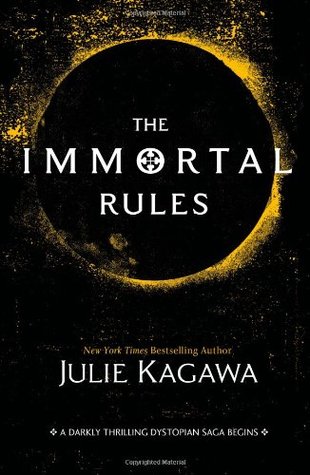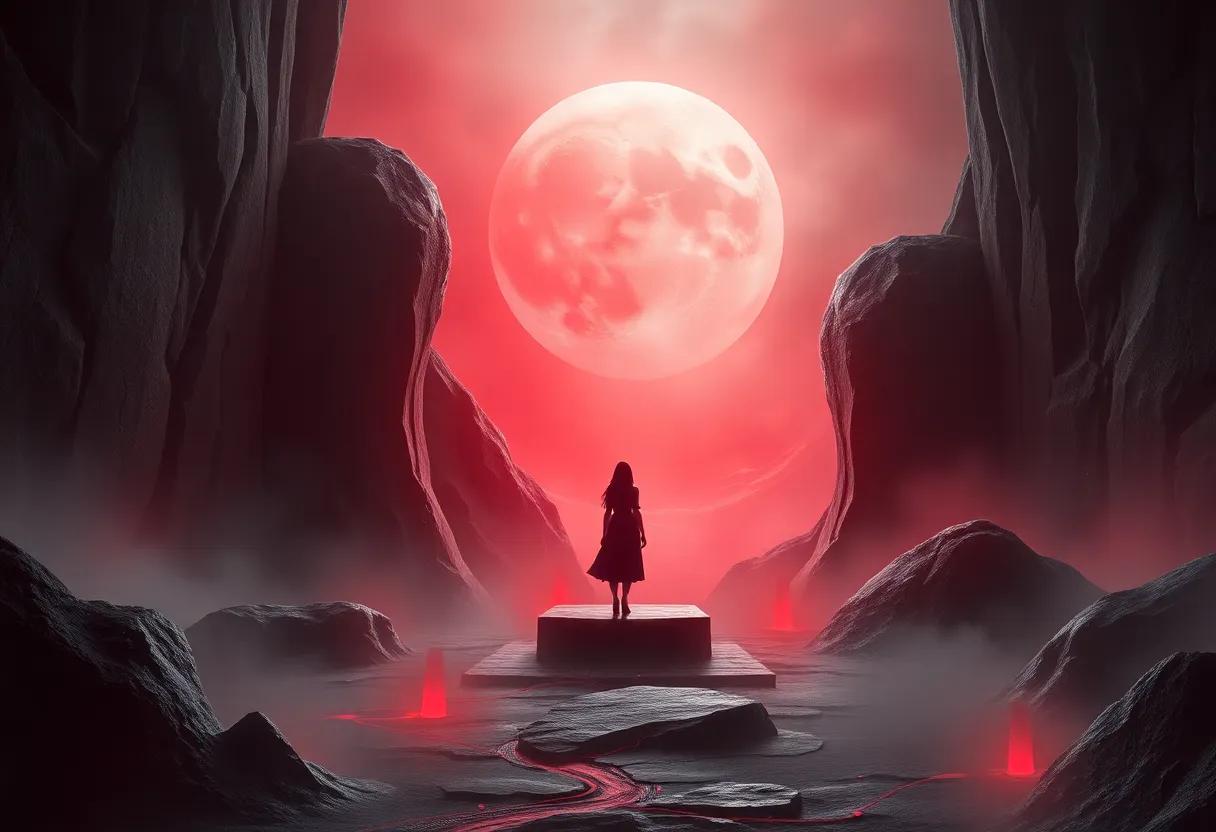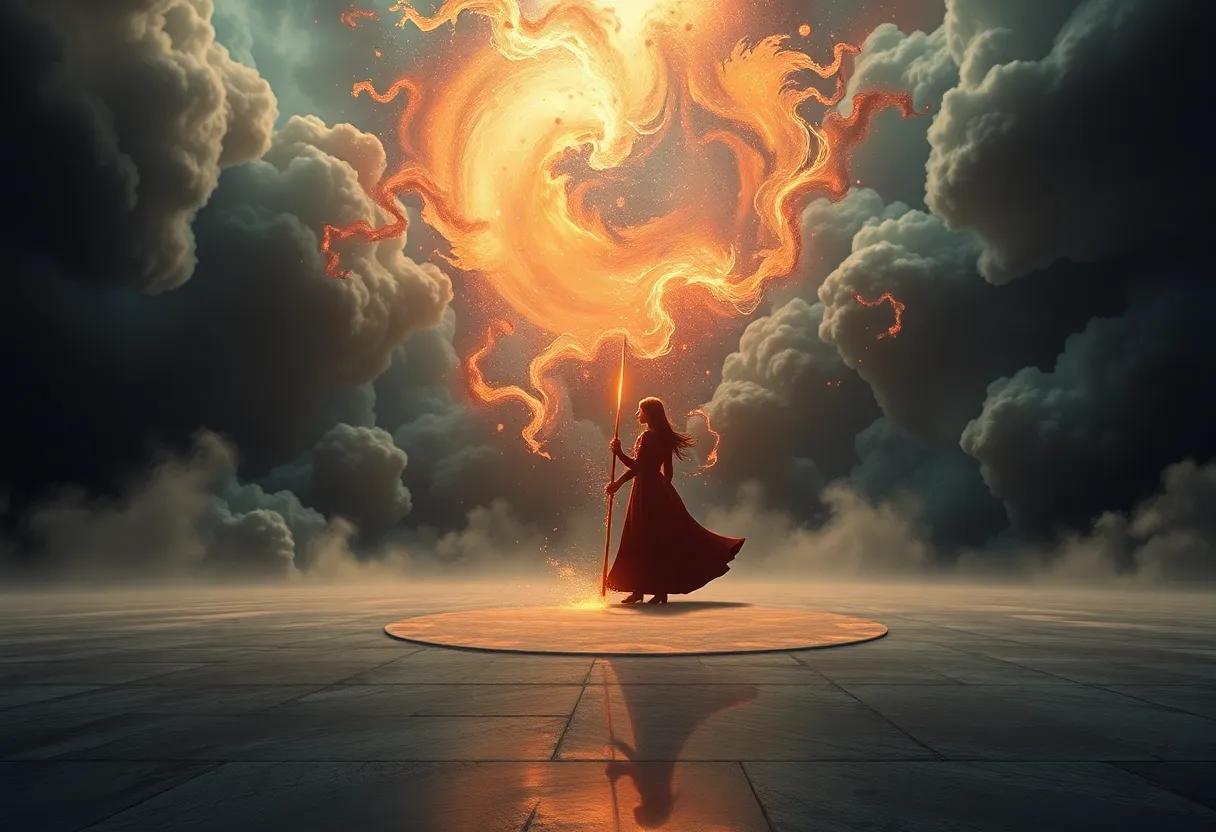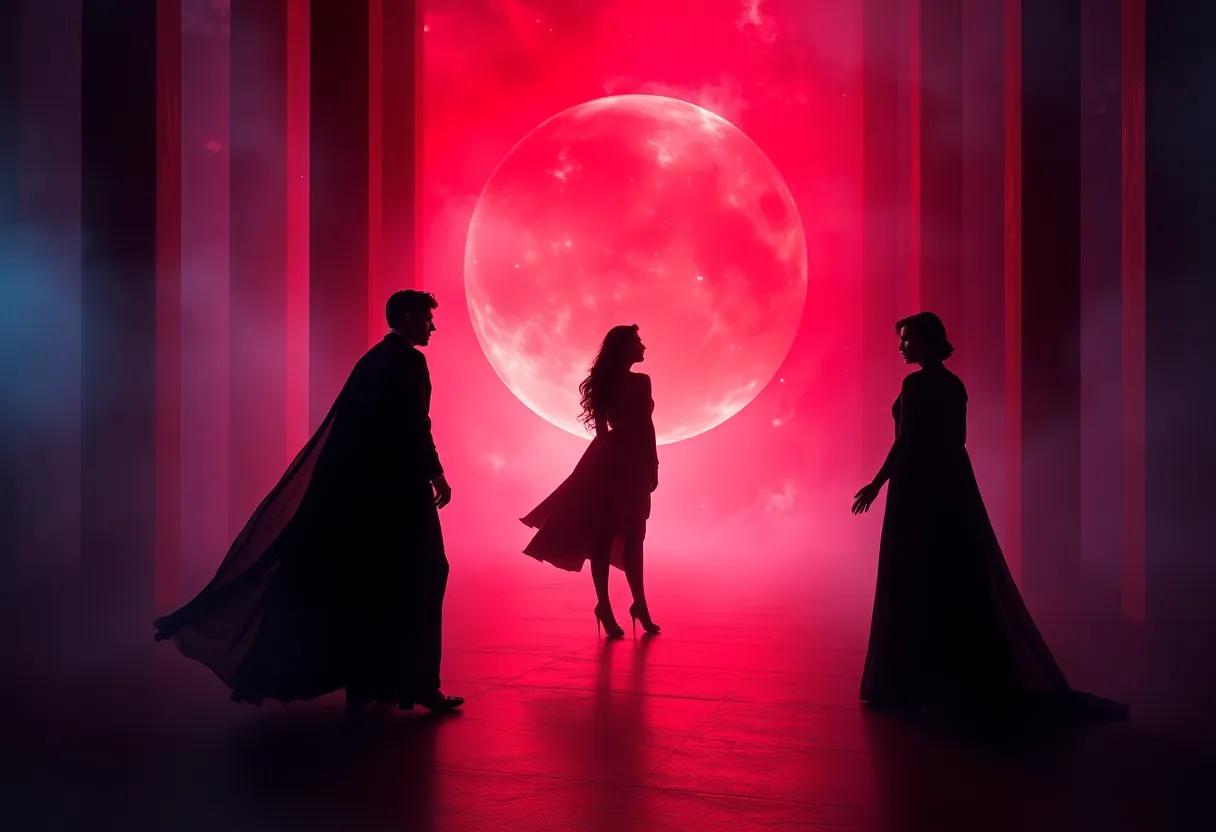In a world where the lines between humanity and monstrosity blur under the shroud of night, Julie Kagawa’s “The Immortal Rules” invites readers to embark on a harrowing journey through a dystopian landscape teeming with danger and moral complexities. This gripping tale unfolds in a society ravaged by disease and dominated by the undead, challenging the very essence of what it means to be alive. Kagawa deftly intertwines themes of survival, sacrifice, and the struggle for identity, crafting a narrative that resonates with echoes of our own world’s darker realities. As we delve into the labyrinth of her creativity, we are tempted to confront our own notions of humanity and the lengths we would go to protect those we love. Join me as we explore the intricacies of “The Immortal Rules,” a story that not only entertains but provokes thought—an exploration of the undying spirit amidst a relentless quest for redemption.
Character Depth and Development in the Immortal Rules
The characters in Julie Kagawa’s The Immortal Rules are not merely vessels of the plot; they embody the complexities of survival, morality, and the quest for identity in a world ravaged by chaos. At the heart of the story is Allison Sekemoto, a young woman transformed into a vampire who struggles with her new nature while clinging to her dwindling humanity. Through her internal conflict, readers experiance her change from a fearful human to a fierce vampire, revealing a nuanced portrayal of resilience. Her journey is punctuated by key choices that challenge her ethical boundaries,pushing her toward self-discovery and growth. This development is compelling not just for its action, but for the emotional core it provides as she grapples with the darker aspects of her existence.
supporting characters add further richness to the narrative, each representing different facets of human experience and moral choices. For instance, Kanin, her mentor, embodies the burdens of immortality and the weight of past decisions, while Jackal serves as a stark contrast, his ruthlessness emphasizing the spectrum of survival instincts.The interactions between these characters prompt readers to reflect on themes such as loyalty, sacrifice, and what it means to be truly alive. Together, they create a tapestry of conflict and camaraderie, making each character’s arc integral not only to the overarching story but also to the exploration of human nature in a post-apocalyptic landscape.
| Character | Role | Thematic Significance |
| Allison Sekemoto | Protagonist | Humanity vs. Becoming |
| Kanin | Mentor | Burdens of Immortality |
| Jackal | Antagonist | Survival Instincts |
The Unique Take on the Vampire Mythos in Kagawa’s World
In Julie Kagawa’s world, the customary vampire mythos undergoes a captivating metamorphosis that challenges preconceived notions of what it means to be immortal. Gone are the charming seducers of classic literature; here, vampires are a grim response to a world ravaged by disease and despair. These night-dwelling creatures, driven by primal instincts, embody both a predator’s ruthlessness and a victim’s vulnerability, offering readers a gripping narrative that delves into the struggle for survival. Kagawa deftly intertwines the themes of humanity and monstrosity,prompting readers to question where the line is drawn between the two.
This unique take is further accentuated by the stark societal divides within Kagawa’s universe.The feudal structure of vampire rule constructs a world brimming with tension and conflict,where the living must navigate their precarious existence under the watchful eyes of their immortal overlords. Key elements include:
- Flesh and Blood Redemption: Characters earn their humanity not only through survival but through their choices.
- Vulnerability of Power: The vampires, while powerful, are also shown to have their weaknesses, adding depth to their portrayal.
- Friend or Foe: The protagonist’s struggle with her identity blurs the lines between savior and monster.
This exploration ultimately leads to a narrative that is both harrowing and thought-provoking, inviting readers to confront their own interpretations of good and evil in a world where the two frequently enough coexist.
Themes of Survival and Morality Explored in a Dystopian Setting
In Julie Kagawa’s ’The Immortal Rules’, the struggle for survival takes on a multifaceted approach, illustrating how the human condition is tested against the backdrop of a dystopian world overrun by vampires and plagued by disease. As the protagonist, Allison Sekemoto, navigates the harrowing terrain of a world where humanity has crumbled, her journey embodies the constant tension between self-preservation and compassion. The choices she makes reflect a deeper moral dilemma; she is often faced with questions of what it means to be truly alive and what one must sacrifice to protect those they love, underscoring the idea that survival might come at the cost of one’s principles.
Throughout the narrative, the dichotomy between the predator and the prey becomes emblematic of broader themes within the human experience. As characters grapple with their own survival, they unveil distinct interpretations of morality shaped by their harsh realities. The following elements are essential in exploring these themes:
- Empathy vs. Instinct: The balance between preserving one’s humanity and succumbing to primal urges.
- Survival ethics: The moral choices individuals face when survival is contingent upon the exploitation of others.
- Community versus Isolation: The tension between seeking connection and the instinct to fend for oneself.
This complex web of survival ethics is encapsulated in a table that summarizes the various character arcs and their moral decisions:
| Character | Survival Motivation | Moral Compromise |
|---|---|---|
| Allison Sekemoto | Protecting loved ones | Feeding on humans |
| kaname | Preserving vampire dominance | Manipulation |
| Underworld Survivors | Desperation and fear | Betrayal of peers |
The Role of Friendship and Loyalty Amidst chaos
In a world where chaos reigns and survival hangs by a thread, the bonds of friendship and loyalty become a beacon of hope, illuminating the dark paths characters traverse. Allie Sekemoto, the protagonist of Julie Kagawa’s ‘The Immortal Rules,’ embodies this truth as she navigates through a dystopian landscape riddled with danger and moral complexities.Her relationships reflect a tapestry woven with threads of trust and sacrifice, demonstrating how profound connections may serve as lifelines in the most tumultuous of times. Each bond she forms not only shapes her identity but also propels her forward, motivating her to confront the harsh realities of her synthesized existence as a vampire trying to reconcile her humanity.
Moreover, the dynamics between Allie and her companions showcase the essential role of loyalty when facing external threats. When allegiances shift and stakes rise, the characters must grapple with their personal values versus collective survival. Consider the following aspects of loyalty that Kagawa artfully illustrates:
- Betrayal and Trust: Moments that challenge characters’ beliefs in one another highlight the fragility of trust under pressure.
- Impact of Sacrifice: Characters demonstrate their willingness to risk everything for each other, transcending their fear of mortality.
- Forging new Alliances: In the face of adversity, new friendships develop, each offering strength against a common enemy.
Through these intricately developed relationships, the narrative emphasizes that even in a world threatened by darkness, the light of friendship can guide individuals, reminding them of the essence of their humanity. Such connections not only anchor Allie but also provide a complex exploration of loyalty’s multifaceted nature, forcing readers to reflect on what it truly means to stand by others in times of upheaval.
Pacing and Structure: A Journey Through a Dark Landscape
In Julie Kagawa’s ‘The Immortal rules’, the pacing is an artful blend of relentless forward momentum and contemplative pauses, reflecting the protagonist’s tumultuous inner journey. Kagawa masterfully weaves moments of high tension with quieter interludes, allowing readers to absorb the weight of a world suffocated by darkness. The narrative tension frequently rises through unexpected twists,pushing Allie into survival mode,while the slower scenes invite readers to delve into her moral quandaries. This careful balance creates an immersive experience,where each heartbeat resonates with the urgency of her choices against a barren landscape fraught with peril.
The structure of the novel enhances its themes, utilizing a linear yet dynamic progression that mimics Allie’s physical and emotional travels.Kagawa’s use of distinct plot arcs intertwines her character’s quest for identity with the larger struggle against oppressive forces. Each chapter builds upon the last, establishing a rhythm that feels both natural and certain. By integrating flashbacks and inner monologues, Kagawa deepens the narrative, allowing readers to reflect on past traumas while grappling with the present. This layered storytelling invites an exploration of resilience, illustrating how hope can flicker even in the darkest landscapes.
Vivid Descriptions That Bring the Dystopian World to life
In Julie Kagawa’s The Immortal Rules, the world is not merely a backdrop but a living, breathing entity that shapes the characters and their fates. As readers descend into this dystopian realm, they are greeted by vivid landscapes that pulsate with danger and decay. Concrete jungles intertwine with ruined buildings,crafting a tapestry of desperation where the remnants of civilization cling to survival. The air is often thick with the stench of filth and despair, enhancing the oppressive atmosphere. Gothic features blend seamlessly with modern desolation, creating a stark contrast that heightens the sense of unease. Kagawa skillfully paints scenes where the ordinary becomes grotesque—streetlights flicker sporadically like dying stars while shadows conceal the lurking threats of both humans and vampires alike.
The author ingeniously employs sensory details to immerse readers deeper into this unsettling world. Sounds of anguish echo through the deserted streets, mingling with the rustle of rats and the distant cries of the desperate. The author brings to life a cast of characters who navigate through this bleak surroundings, each shaped by their experiences in a land governed by survival and hunger.rich descriptions paint the stark contrasts between the elite and the outcasts,with opulent compounds rising high above the squalor,symbolizing a cruel hierarchy.Kagawa’s ability to illustrate these disparities serves to enhance the emotional weight of the narrative, compelling readers to reflect on the fragility of humanity amid overwhelming despair. It is this intricate fusion of the picturesque and the grotesque that captivates and haunts, ensuring the world of The Immortal Rules lingers long after the last page has turned.
exploration of Power Dynamics Between Humans and Vampires
Furthermore, the author delves deeper into the psychological aspects of these power dynamics by presenting nuanced characters that defy simple categorizations of ‘predator’ and ‘prey’. Here are some key aspects that illustrate the complexities:
- Moral Conflicts: Characters grapple with the ethics of survival and the cost of their choices.
- Resistance: The notion of rebellion against oppressive authorities is a powerful theme that resonates through Allison’s journey.
- Alliances: Unlikely partnerships form, blurring the lines between human and vampire motivations, showcasing solidarity in shared struggles.
| Aspect | Human Perspective | Vampire Perspective |
|---|---|---|
| Power Structure | Oppressed, seeking freedom | Dominant, enforcing control |
| Survival Tactics | Resourceful and adaptable | Strategic and calculative |
| Emotional Complexity | Struggling with identity | Torn between instinct and emotion |
The Impact of Choice and Free Will on Character Arcs
In “The Immortal Rules,” characters grapple with the essence of choice and the consequences of their decisions in a world where survival often outweighs morality.The protagonist, Allison Sekemoto, faces pivotal moments that challenge her beliefs and test her will. Her evolution is primarily shaped by the choices she makes in reaction to the dystopian setting of the story. When confronted with the ruthless reality of bloodsuckers and human scarcity, Allison’s decisions highlight her internal struggle between retaining her humanity and succumbing to the primal instincts induced by her new existence.This conflict not only propels her character arc but also emphasizes the notion that choice—whether it leads to self-discovery or self-destruction—remains inherently tied to identity.
As the narrative unfolds, the interplay between free will and external influence becomes especially salient. Key characters, including the enigmatic vampire Kanin and the callous human, Jack, embody the spectrum of choice. Through their interactions with Allison, they exemplify how individual motivations can steer destinies in drastically different directions. Their choices invite readers to ponder the effects of loyalty, betrayal, and the moral dilemmas that arise when survival is at stake. The exploration of these themes is not merely a backdrop but a driving force that shapes the trajectories of the characters, ultimately revealing that every choice, no matter how small, contributes to the overarching tapestry of their lives.
A Closer Look at Kagawa’s Narrative style and Voice
Julie Kagawa’s narrative style in The Immortal Rules is both evocative and immersive, drawing readers into a world where danger lurks at every corner and the stakes are perpetually high. Kagawa masterfully blends descriptive imagery with sharp dialog, allowing the reader to visualize the dystopian landscapes and the internal struggles of her characters. The use of first-person perspective adds a layer of intimacy, as we witness the protagonist, Allison Sekemoto, navigate her transformation from human to vampire. Kagawa’s prose pulsates with emotion, presenting themes of survival, identity, and morality through Allison’s eyes, effectively making her journey resonate on a deeply personal level.
Along with the gripping story progression, Kagawa’s careful attention to voice enhances the overall experience of the novel. The juxtaposition of gritty realism and fantastical elements creates a compelling narrative push, keeping readers engaged. The characters are multidimensional, each with their own motivations and moral dilemmas, which Kagawa emphasizes through dynamic interactions and sharp character contrasts. By using rich metaphors and vivid sensory details, she crafts a narrative rhythm that feels both urgent and reflective, making every conflict feel palpable and every moment of introspection significant. Such a narrative craft not only captivates audiences but also encourages them to ponder deeper questions about life, death, and what it truly means to be alive.
Symbolism and Metaphor: Layers of Meaning in the Story
Julie Kagawa’s ‘The Immortal Rules’ is rich with symbolism and metaphor, weaving together themes that resonate deeply within its narrative. The vampires themselves serve as a metaphor for power and control,embodying humanity’s fears of domination and the loss of freedom. Their existence challenges the protagonists to confront the darker aspects of human nature and the decisions that shape our identities. The presence of the rabids, those lost to the infection, echoes the struggles of the human condition—representing not only the aftermath of despair but also the inherent fight for survival against all odds. Furthermore, the concept of blood, both as a vital source of life and a means of transformation, underscores the complex relationship between life and death, highlighting the choices characters must make in their quest for morality amid chaos.
Additionally, the world that Kagawa constructs uses various symbols to illustrate the clash between hope and despair. The city’s skyscrapers, towering yet crumbling, reflect the fragility of civilization and the heavy price of progress.In stark contrast, the wild landscapes outside the city serve as a reminder of nature’s resilience, representing a sanctuary where true freedom still exists. Within this backdrop, characters seek connections and purpose, often finding themselves at crossroads that challenge their values and desires. The intricate layering of these symbols creates a narrative that invites readers to explore their own perspectives on freedom, humanity, and the notion of what it truly means to be alive.
How The Immortal Rules Stands Out in Young Adult Literature
In a landscape saturated with typical vampire narratives, julie Kagawa’s work emerges as a refreshing anomaly. With its gripping storyline set in a dystopian world where humanity teeters on the brink of extinction, this novel deftly weaves themes of survival, identity, and moral ambiguity. The protagonist, Allie, presents a compelling exploration of what it means to be human while navigating her existence as a newly turned vampire. Kagawa challenges the archetype of the vampire as a mere predator; instead,Allie’s journey highlights issues of power dynamics,self-discovery,and the shades of gray in the choices one must make to survive. The immersive world-building captures readers’ imaginations, making them ponder the true cost of immortality.
What truly sets this novel apart is its ability to blend genres, pulling elements from fantasy, horror, and even romance, creating a multi-layered reading experience. Kagawa’s characters are not only relatable but also evolve in unexpected ways, enveloping readers in their struggles and triumphs. The integration of thought-provoking questions about ethical dilemmas,such as the morality of killing for survival and the complexities of friendship across species,elevates the story beyond mere entertainment. This depth is further emphasized through constant tension and high stakes, making it a standout title that resonates with the youthful spirit of rebellion and self-discovery.
Critique of Romance Elements in a Vampire Story
In Julie Kagawa’s “The Immortal Rules,” the romantic elements are intricately woven into the fabric of the narrative, serving both to enhance character development and to amplify the overarching themes of survival and identity. The central relationship between Allie and Kanin encapsulates a blend of tension and tenderness, challenging traditional vampire lore by introducing a dynamic that goes beyond mere attraction. This connection is underscored by the following elements:
- Conflict of Nature: Allie’s struggle between her humanity and her vampire instincts adds depth, creating a push-pull dynamic that complicates their romance.
- Power Imbalance: Kanin’s role as a mentor and father figure complicates their relationship, raising questions about dominance in romantic partnerships.
- Forbidden Love: Their connection is beset by societal norms, reinforcing the classic trope of love that defies boundaries.
However, while the romantic subplot offers moments of warmth, it occasionally feels overshadowed by the action-oriented plot, leading to a somewhat underdeveloped emotional landscape. The tension that fuels the romance sometimes lacks the exploration required to resonate fully with the audience.A simple table illustrating key romantic moments versus action scenes could reflect this imbalance:
| Scene | Description | Romantic weight | Action Weight |
|---|---|---|---|
| Allie and Kanin’s First Encounter | Allie’s transformation into a vampire. | high | Medium |
| The Night of Reckoning | Strategizing to survive against the rabids. | Low | High |
| Heartfelt Confrontation | Discussion about their futures. | Medium | Low |
Kagawa successfully integrates romance within her vampire narrative, but the relationship frequently enough exists in a reactive state to external threats rather than as a driving force of the story. This interplay between romance and action can leave the reader eager for a richer exploration of the emotional stakes involved, providing fertile ground for character arcs that could be cultivated further in future works.
The Broader Implications of Kagawa’s Themes in Society
Julie Kagawa’s exploration of themes in ”The Immortal Rules” extends well beyond the boundaries of its fictional setting,striking at the very core of contemporary societal issues. the book delves into the struggles of identity, survival, and the ramifications of choices, reflecting real-world dilemmas that resonate with many. Readers can draw parallels between the characters’ fight against oppression and the ongoing battles for justice in our societies, revealing how power dynamics often dictate the value of life and the essence of humanity. The threads of indifference, empowerment, and conformity woven through Kagawa’s narrative invite audiences to reflect on their own experiences within a rigid societal framework.
The implications of Kagawa’s work challenge us to examine critical questions regarding morality and humanity in an age where the lines between good and evil are frequently blurred. In a landscape characterized by dystopian realities, the novel prompts readers to confront the uncomfortable truths about resilience in the face of despair and the essence of sacrifice. By depicting a world where survival often necessitates moral compromise, Kagawa encourages discourse on significant themes, such as:
- Ethical dilemmas in arduous choices
- Social hierarchy and the fight against oppression
- The struggle for identity in changing environments
Such discussions hold the potential to inspire transformative actions within our communities. Whether it’s embracing empathy towards marginalized individuals or advocating for social change, the themes presented by Kagawa resonate with a call-to-action for readers to not only witness but actively participate in shaping a more inclusive society.
Julie Kagawa: A Pioneer in Modern Young Adult Fantasy Writing
Julie Kagawa has undoubtedly carved a niche for herself in the realm of young adult fantasy, pushing the boundaries of imagination while intertwining vibrant characters with rich narratives. Her storytelling prowess shines through in The Immortal Rules,where she seamlessly blends elements of traditional vampire lore with a dystopian setting. The protagonist, Allie Sekemoto, is a testament to Kagawa’s ability to create compelling, relatable characters who grapple with moral complexities and personal growth. Throughout the novel, Kagawa captures the essence of survival in a world ravaged by vampirism and societal collapses, making readers ponder the thin line between humanity and monstrosity.The novel stands out for its vibrant world-building and exploration of themes that resonate with contemporary readers. Kagawa draws readers into a universe where hope and despair coexist, reflecting the struggles of adolescence within a backdrop of fantastical darkness. Notably, her skillful use of conflict, both internal and external, invites readers to walk alongside Allie as she navigates her journey of self-discovery. To underscore her impact within the genre, here are some key elements that define her innovative approach:
- Diverse Characters: Kagawa populates her world with characters from various backgrounds, ensuring portrayal and depth.
- complex Morality: The questions of right and wrong are not easy, reflecting real-world dilemmas that resonate with young adults.
- Vivid Imagery: Her descriptive prose creates a visually captivating landscape that enhances the reading experience.
Through her mastery of weaving elaborate plots with profound themes, Kagawa’s work resonates powerfully in today’s literary landscape. Her influence on the young adult fantasy genre has inspired countless aspiring authors to explore new horizons within their own storytelling. This impact is particularly notable in the way she fosters a conversation about identity, agency, and the moral choices we make in life. Kagawa not only entertains her readers but also encourages them to reflect on their own choices in a world filled with complexities and challenges. The following table summarizes key aspects of Kagawa’s writing style that contribute to her status as a pioneer in this genre:
| Aspect | Description |
|---|---|
| Character Depth | Multi-dimensional protagonists facing significant internal struggles. |
| Thematic Exploration | Delving into themes of survival, morality, and identity. |
| World-Building | Immersive settings that reflect societal issues and fantastical elements. |
| Voice | Engaging and relatable narrative style that speaks to young adults. |
Final Thoughts
“The Immortal Rules” by Julie Kagawa invites readers into a hauntingly vibrant world where the lines between humanity and monstrosity blur. Through the eyes of Allie Sekemoto, we traverse a landscape marked by survival, moral dilemmas, and the unyielding pursuit of one’s identity amidst chaos. Kagawa’s deft character development and richly detailed settings create an immersive experience that lingers long after the final page is turned.
As we emerge from this journey, we are left to ponder the essence of our choices and the delicate nature of our existence. “The Immortal Rules” serves not only as a gripping tale of vampiric lore but also as a poignant reflection on what it means to live—truly live—in a world that tests the very boundaries of our humanity. For those ready to delve into a narrative that both enchants and challenges, Kagawa’s work is undoubtedly a venture worth taking. So close the cover, but don’t forget the questions it compels you to carry with you into the shadows of your own reality.















